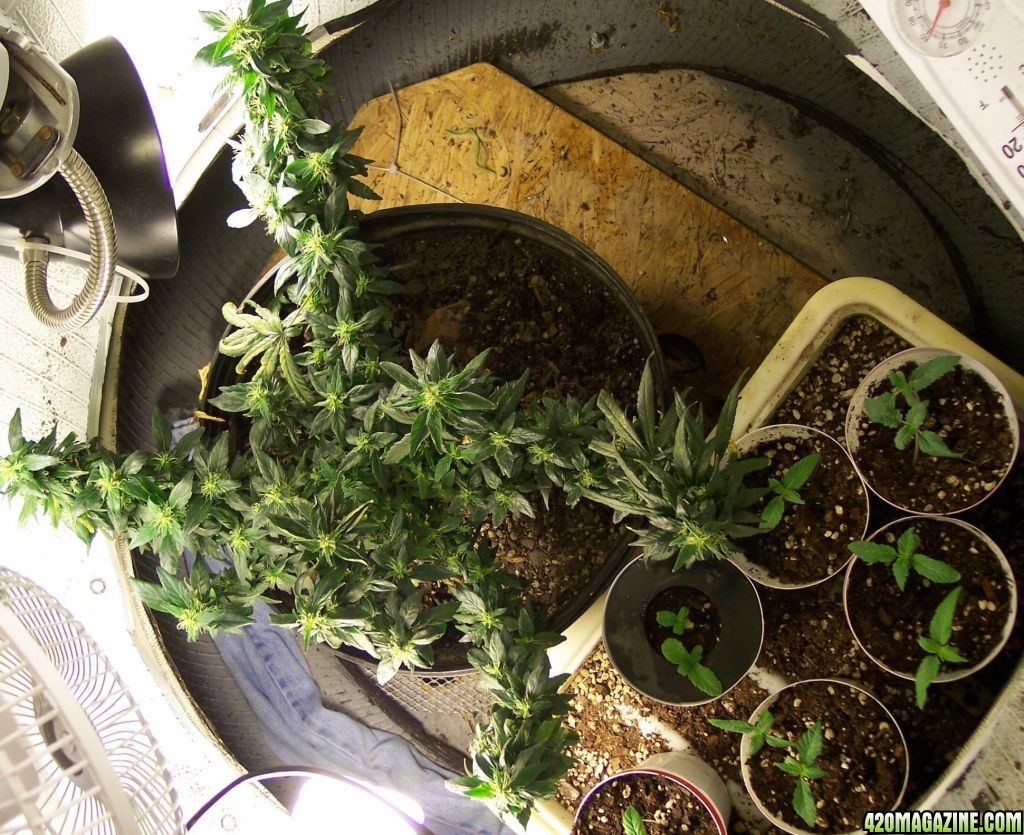here are a few peer reviewed journal abstracts with no citations. . . am I in trouble? lol
with a static field:
Young plantlets of maize (obtained from caryopsides with uniform genophond let to germinate and growth within an Angelantoni scientifica climatic room) have been cultivated in the presence of static magnetic field in order to observe the dynamics of plant length. Average values and standard deviations have been daily evaluated. Stimulatory effect of the magnetic field ranging between 50 mT and 250 mT was noticed with a saturation tendency at the 5th, 7th and 9th day. Linear correlations were found to describe the average length dependence on the magnetic energy. After 11 days the total fresh substance mass was weighted as well as the dry substance mass. Logarithmic dependence of the dry substance mass on the magnetic energy was evidenced. The application of t-test revealed the effect of certain non-homogeneity of the magnetic sources
The effect of a constant magnetic field on the germination of bean seeds over 5 days and also the action on dormant wheat and barley seeds before sowing are investigated. Treatment of bean seeds at the growth stage accelerates plant development, increases the above-to-below-ground ratio, and leads to an increase in the adsorbing surfaces of the root system. A characteristic feature of seeds grown under a constant magnetic field is the increased water uptake, quantity of bound water in the leaves, and productivity. Treatment of dormant wheat and barley seeds before sowing increases the winter harvest by 16-20%
with an AC feild:
The effects of pre-sowing magnetic treatments on growth and yield of tomato (cv Campbell-28) were investigated under field conditions. Tomato seeds were exposed to full-wave rectified sinusoidal non-uniform magnetic fields (MFs) induced by an electromagnet at 100 mT(rms)for 10 min and at 170 mT (rms) for 3 min. Non-treated seeds were considered as controls. Plants were grown in experimental plots (30.2 m2) and were cultivated according to standard agricultural practices. During the vegetative and generative growth stages, samples were collected at regular intervals for growth rate analyses, and the resistance of plants to geminivirus and early blight was evaluated. At physiological maturity, the plants were harvested from each plot and the yield and yield parameters were determined. In the vegetative stage, the treatments led to a significant increase in leaf area, leaf dry weight, and specific leaf area (SLA) per plant. Also, the leaf, stem, and root relative growth rates of plants derived from magnetically treated seeds were greater than those shown by the control plants. In the generative stage, leaf area per plant and relative growth rates of fruits from plants from magnetically exposed seeds were greater than those of the control plant fruits. At fruit maturity stage, all magnetic treatments increased significantly (P<.05) the mean fruit weight, the fruit yield per plant, the fruit yield per area, and the equatorial diameter of fruits in comparison with the controls. At the end of the experiment, total dry matter was significantly higher for plants from magnetically treated seeds than that of the controls. A significant delay in the appearance of first symptoms of geminivirus and early blight and a reduced infection rate of early blight were observed in the plants from exposed seeds to MFs. Pre-sowing magnetic treatments would enhance the growth and yield of tomato crop
The impact of combined magnetic field (CMF) on the gravitropic response (GTR) of 3-day cress roots in the frequency region from 1 to 45 Hz has been investigated. Changes of the sign of GTR, its activation or inhibition, or else the inhibition of the root growth itself, were observed at some fixed frequencies. The changes are resonance dependent on the frequency. The frequencies, at which the above-mentioned effects were found, are formally coinciding with the cyclotron frequencies for ions Ca2+, K+, IAA-, ions of gibberellins, ions of abscisic acid and Cu+, as well as, with the frequencies at which the electromagnetic field radiation was observed before [1,2]. Possible mechanisms of the CMF effect on GTR are discussed. © 2005 Begell House, Inc.
the one recurring theme i see throughout the papers is that temperature seems to make the biggest impact on whether or not there will be a positive effect. . . some papers are saying that no effect was observed, and a few report negative results. pretty much what you said earlier.
also i forgot to mention. . . there are different hormones that control a plants growth. . . auxins are the hormones responsible for "gravitropism" or the reason why plants will fight gravity. Phototropism is also enabled by auxins. Auxins are plant hormones that have many functions. In phototropism, auxins are responsible for expelling protons (by activating proton pumps) which decreases pH in the cells on the dark side of the plant. This acidification of the cell wall region activates enzymes known as expansins which break bonds in the cell wall structure, making the cell walls less rigid. In addition, the acidic environment causes disruption of hydrogen bonds in the cellulose that makes up the cell wall. The decrease in cell wall strength causes cells to swell, exerting the mechanical pressure that drives phototropic movement.
just thought i would clarify that, wiki those two terms to find out more.





 looks to be a very sound idea
looks to be a very sound idea


 Hahaha! 3 per Plant Not sure what the Gauss rate is as the Retailer/MFG where I bought them was not listed. I've used the Neo-Magnets on Engines for Crank Triggers before and they are indeed brittle but way more powerful!
Hahaha! 3 per Plant Not sure what the Gauss rate is as the Retailer/MFG where I bought them was not listed. I've used the Neo-Magnets on Engines for Crank Triggers before and they are indeed brittle but way more powerful!

